
China’s Extending Reach in Myanmar
World Politics Environment- English
- 日本語
- 简体字
- 繁體字
- Français
- Español
- العربية
- Русский
Dissonance in the Hinterlands as China Moves In
Myanmar’s dependence on China is easy to see. Brightly colored Chinese company signs and billboards are prominent, Chinese-looking businessmen stroll along the streets of Yangon, Myanmar’s largest city, and Chinese tourists seem to be everywhere. While I was visiting, a Chinese crew happened to be filming in Yangon, disrupting traffic and causing general confusion. Native residents looked resigned, their expressions appearing to say that there was nothing they could do.
Where Chinese influence is most pervasive, however, is not in the city but in a region populated by ethnic minorities far from Yangon. I went to see for myself, traveling by plane from Yangon via Mandalay to make my way to Myitkyina in Myanmar’s northernmost state of Kachin which shares a long border with China’s Yunnan Province. There, I found China’s local activities a disturbing reality for the people who live there.
As I carried out my research in the state capital of Myitkyina, an acquaintance working for local media told me that two journalists had been detained by personnel of what is believed to be a Chinese company.
The Myitkyina News Journal is a local paper published every Monday. It had only recently been launched following the liberalization of the press within Myanmar. I visited its office to learn more and found the staff in an editorial meeting discussing the incident I had just heard about. After it ended, I was introduced to the two young journalists who had been detained by the company in question, Moon Moon Pan and Ah Je.
Moon Moon Pan had written an article about the sudden expansion of the banana plantations in the region and how unhappy the local farmers were about this. The next day several men from one of the companies that had been cited in the piece appeared at the Journal office and asked Moon Moon Pan, and Ah Je who just happened to be there, to accompany them to another location to “discuss” the article.
Upon arriving at the company’s offices, the men suddenly became aggressive and separated the two journalists, taking them to different rooms. Moon Moon Pan was roughly interrogated. “Who told you to write that article?” “Tell us and we’ll pay you one million kyat” (about ¥70,000). The two were rescued by their coworkers and the police after Ah Je managed to use his cellphone to post their plight on Facebook.
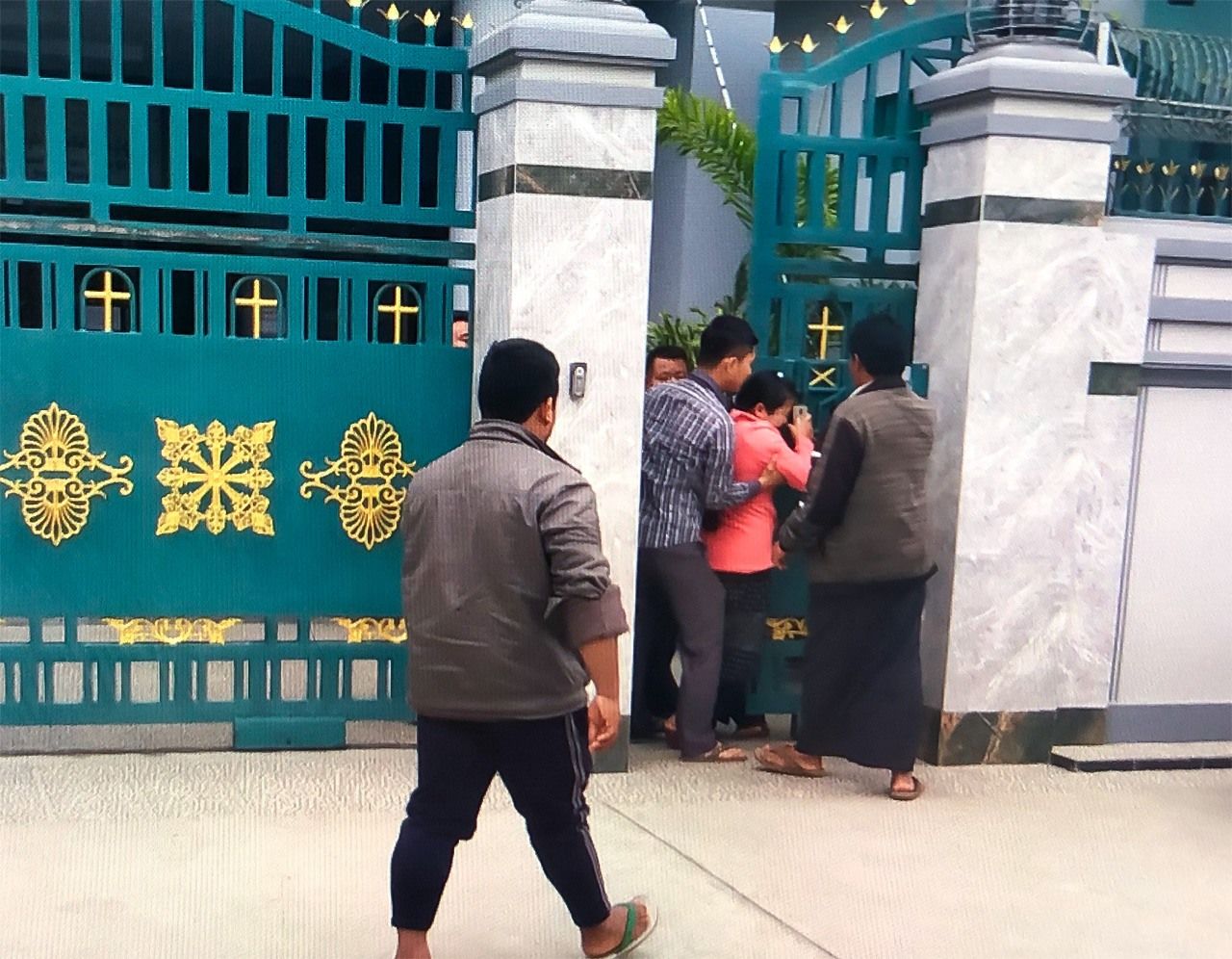
Moon Moon Pan being forced into the company compound. Ah Je took this photo with his cellphone and posted it on Facebook. (Courtesy Myitkyina News Journal)
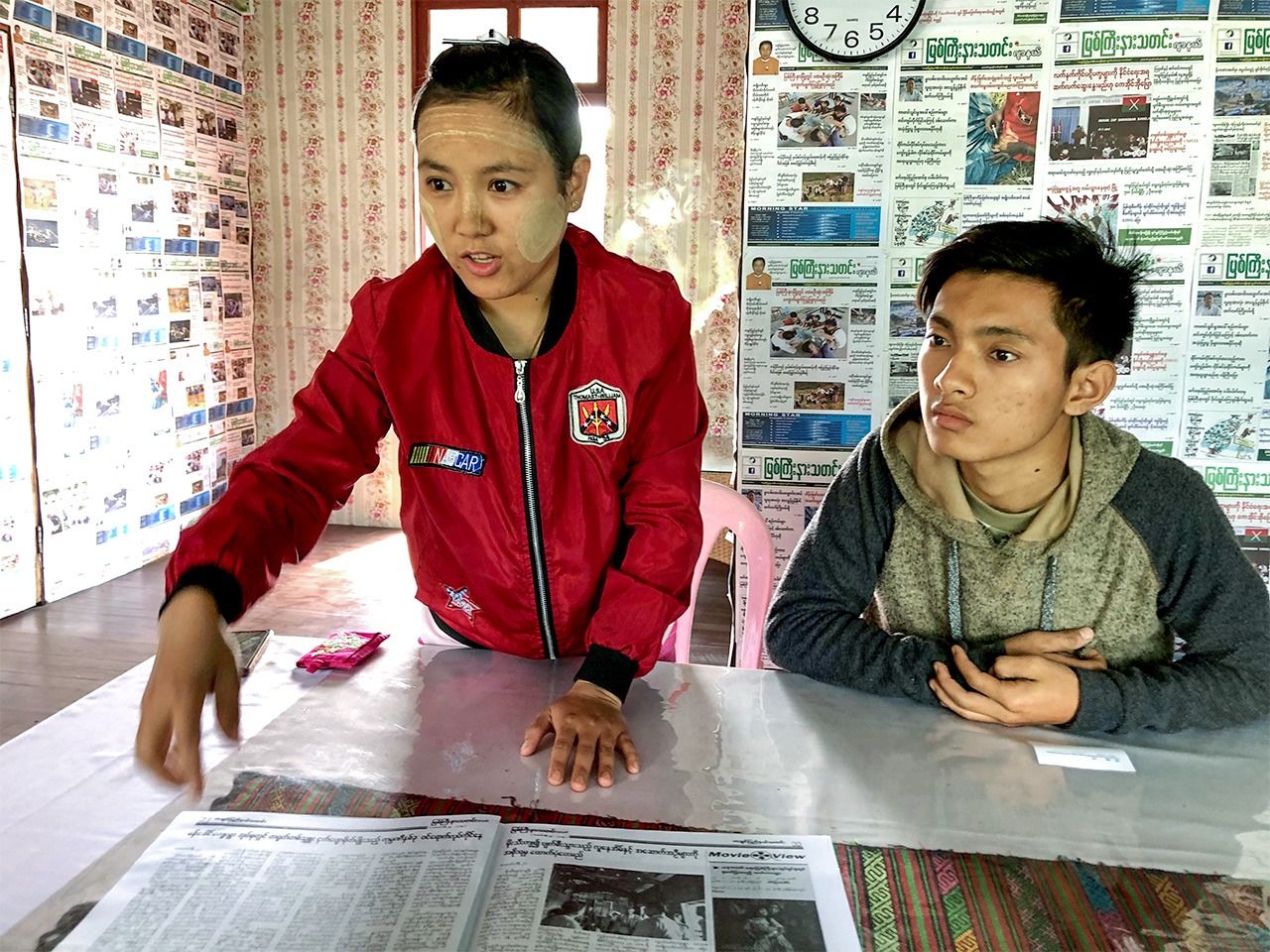
Moon Moon Pan (left) and Ah Je (right) talk about their ordeal. (Courtesy the author)
The company that caused all the ruckus is not directly Chinese-owned but works very closely with Chinese partners to manage a banana plantation for exports to China. Bananas sold within Myanmar are small and have a brown tint. Those exported to China are large and yellow. The bananas cultivated in Kachin are generally of the latter variety and are mass-produced on plantations situated on land bought cheaply from local farmers.
I talked to Tu Ring, who now operates a Japanese restaurant in Myitkyina but who had also worked for many years at a Japanese trading company. He suggested what the banana business really entailed.
“Of course, the objective is not just to grow bananas. There are other schemes involved that most people don’t know about and which provide very rich income streams for China and the local businesses that collaborate with China.”
According to him, the lumber available in Myanmar’s forests has significant commercial value. Forests are cleared to make way for the banana plantations and the lumber is hauled to China. If rare metals are found in the ground, the earth is carted off to China as well. Then bananas are grown and harvested for export to China. He said that sometimes opium poppies are grown deep inside the plantation away from prying eyes. The opium business is also a lucrative source of funds for the Kachin Independence Army, a powerful group of antigovernment militants made up of people from Myanmar’s ethnic minorities.
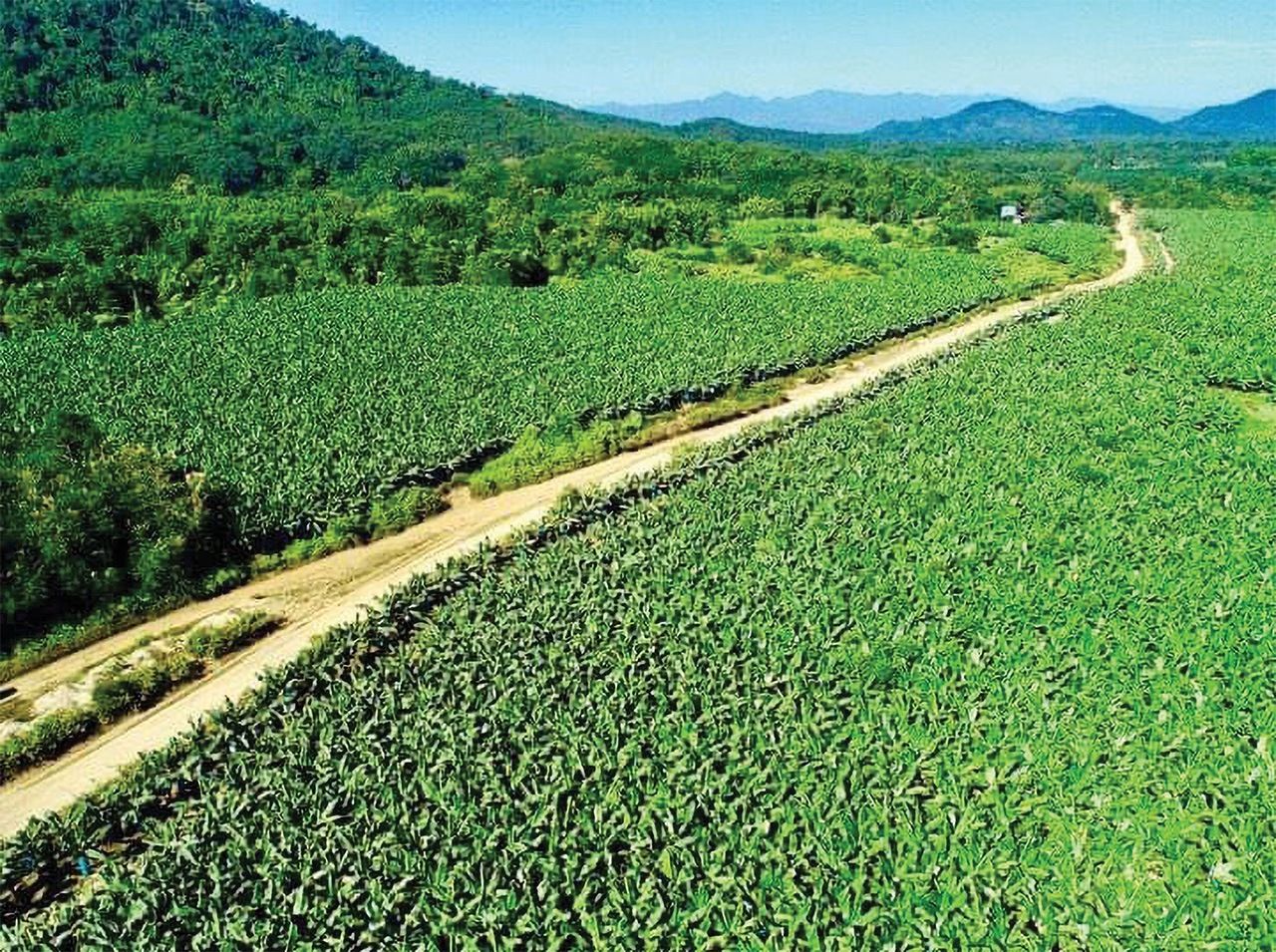
An expanse of banana plantation in Kachin. (Courtesy Myitkyina News Journal)
Plans for a Massive Dam on a Sacred River
Myanmar’s Irrawaddy River is one of the world’s great rivers. Originating in the Himalayas, it flows south through the country’s central plains into the Bay of Bengal. Some 90% of the river basin is within Myanmar’s boundaries. The rich natural abundance of this river is integral to the country. For the people of Myanmar, the Irrawaddy River is as much a part of their lives and as revered as Mount Fuji is by the Japanese.
It originates in Myitsone north of Myitkyina at the convergence of two rivers flowing from the Himalayas. The area is well known to the people of Myanmar, a place that they all hope to visit at least once in their lifetime. The site may disappear, however, if plans for building a mammoth dam are carried out.
The Myitsone Dam project was initiated by the military regime in 2009 with China’s support. Construction advanced at a rapid pace, thanks in part to Chinese laborers. The dam site was cleared of trees and a drive began to move out local communities.
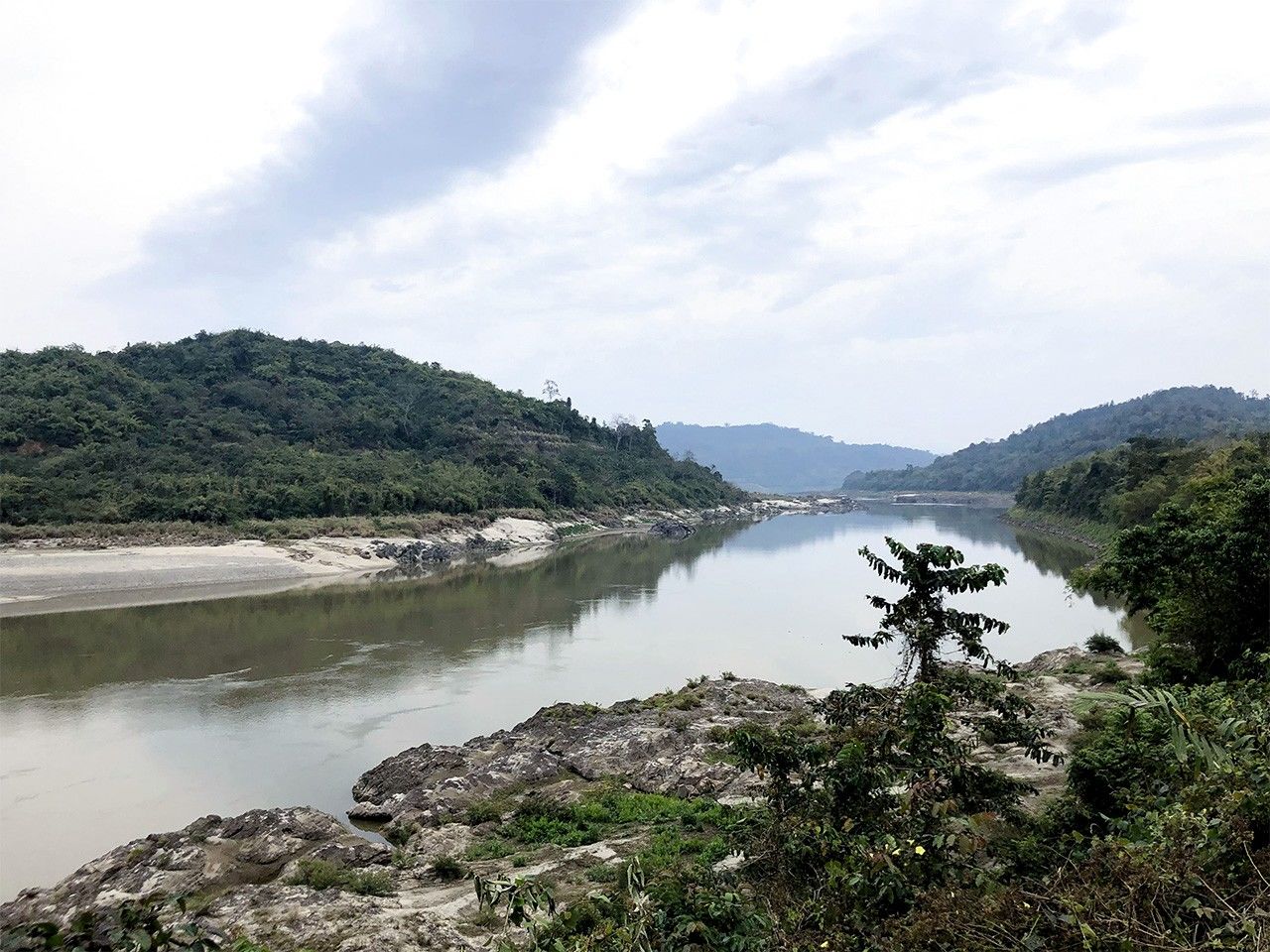
Site of the proposed Myitsone Dam on the Irrawaddy River. (Courtesy the author)
This triggered vigorous protest from environmental groups and the project was suspended when a civilian government was installed in 2011. It has remained suspended even after the 2015 elections won by the National League for Democracy party led by Aung San Suu Kyi, but the NLD is being pressured by China to honor the contract to build the dam while also having to deal with strong resistance from local residents.
I went to see the dam construction site for myself but was shooed away by the Myanmar staff manning the gate. “Nothing to see here,” they told me. When I asked if there were any Chinese there, they replied, “The engineers have left but there are still two or three Chinese managing the facilities.”
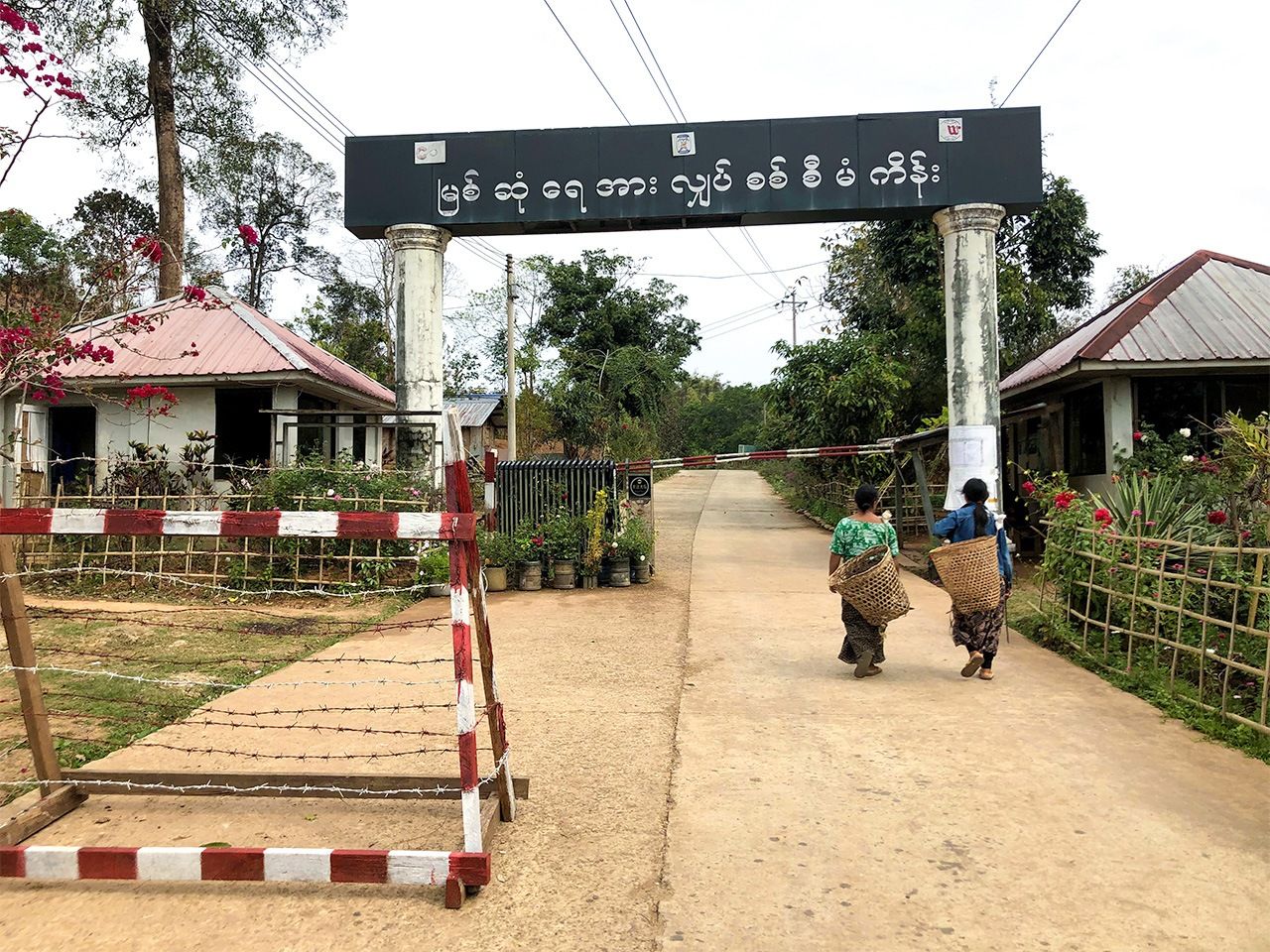
Entrance to closed dam site. (Courtesy the author)
I drove from the gate to Myitsone where the two rivers converge. At first sight, I could understand the objections to the dam. Here, people from all over Myanmar frolicked in the water, swimming and rowing boats. Restaurants lined the riverbank offering delicious freshwater fish cuisine, and I discovered a stone monument set up by writers and scholars protesting the proposed dam.
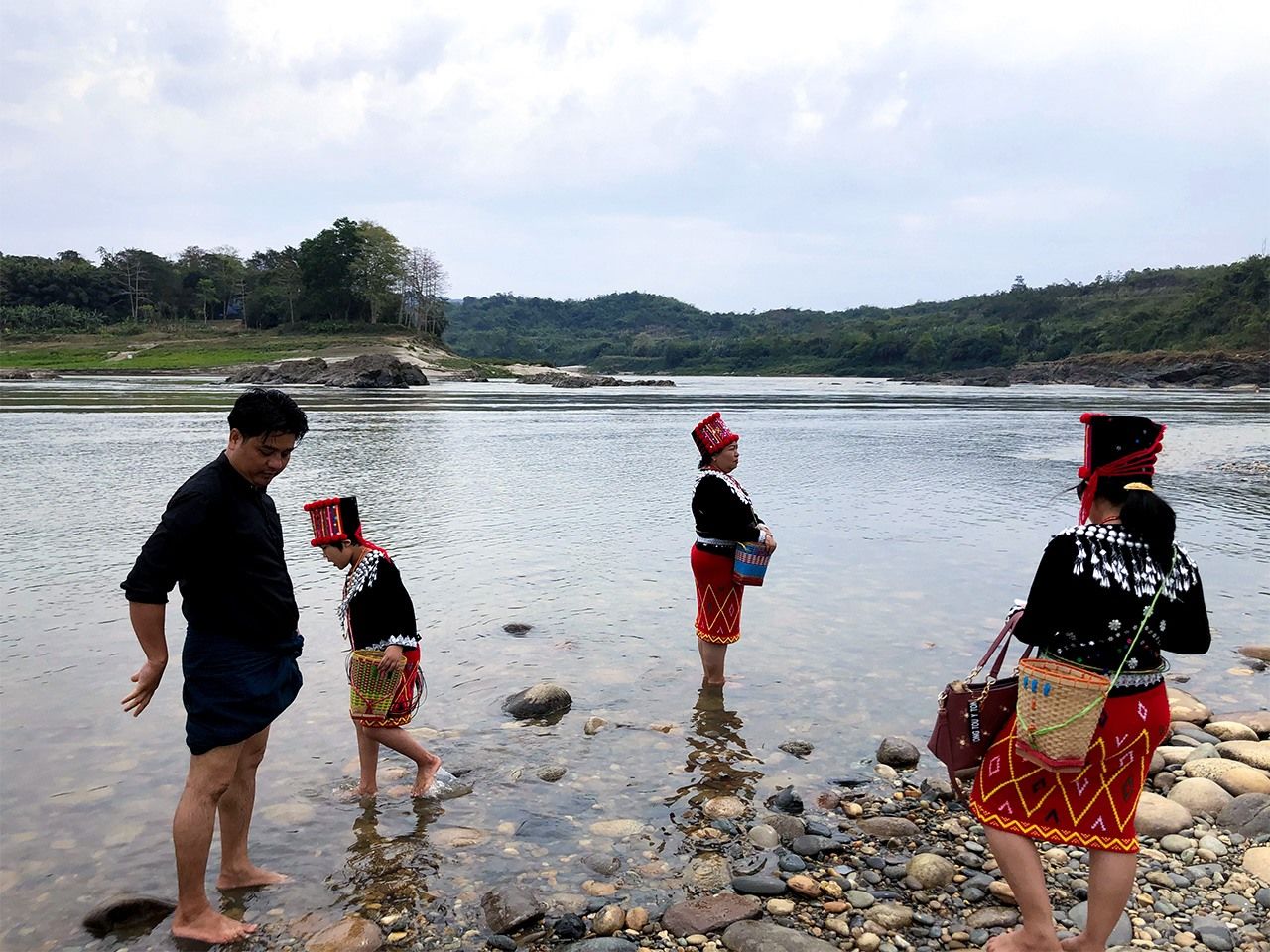
Where the rivers merge in Myitsone. (Courtesy the author)
With a population of less than 2 million, Kachin is not such a large state. It has been estimated that 90% of the 6 million watts of electricity generated by the dam would be supplied to Yunnan Province in China. The birthplace of Myanmar’s most sacred river remains in precarious limbo as the battle continues to prevent it from being swallowed up by China’s mammoth market.
While the West Withdraws, Japan Stays Put
The Myanmar government both welcomes and fears China’s encroachment. Shunned by the countries of the West, the military regime looked to China for support. It appeared that Western societies might take interest in Myanmar again with the emergence of Aung San Suu Kyi’s government, but they quickly retreated before the news of the persecution of the Rohingya people. So far, the only “Western” nation that has retained a presence in Myanmar is Japan.
The Japanese government appears to place great importance on Myanmar. Annual Japanese official development assistance yen loans to Myanmar have gone up from ¥220 billion to ¥230 billion and grant aid currently ranges between ¥15 billion and ¥20 billion. The support for Myanmar stands out at a time when Japanese ODA overall is being scaled back.
Part of this is due to the long tradition of friendship between Japan and Myanmar, but it is also intended to counter China’s efforts to chip away at the strong diplomatic ties Japan has forged over the years.
Currently, the Japanese embassy in Yangon is headed by Maruyama Ichirō, who has a close personal friendship with Aung San Suu Kyi, and staffed by diplomats fluent in the Myanmar language. Under the military regime English language instruction in the universities was allowed to deteriorate and few of Myanmar’s top government officials are able to speak the language. Other diplomatic corps have much praise for Japan for staffing its embassy with people who can negotiate in the local language.
A Clashing of Wills in the State of Rakhine
The clash between Japan and China’s diplomatic maneuvers is most evident in the state of Rakhine in the west, land of the persecuted Rohingya ethnic minority, and stems from China’s desperate efforts to solve its “Malacca dilemma.” China depends on passage through the Strait of Malacca for its energy imports. So does Japan, but the risk of its access being blocked is greater for China because the United States has control over the seas in the region. Desperate to secure an alternate route, China has been actively developing harbors, such as the Gwadar Port in Pakistan and the Port of Hambantota in Sri Lanka and is now targeting the small port of Kyaukpyu in the state of Rakhine.
Through large-scale investment, China appears to be seeking to build a pipeline extending from the Bay of Bengal into the Chinese mainland. Roiled by the Rohingya crisis, the state of Rakhine has been strongly criticized by the West and has little expectations of attracting investors. Xi Jinping’s government, however, sees this as an opportunity to incorporate Myanmar into its ambitious One Belt, One Road initiative through its offers to build ports.
Alarmed that China might get a monopoly grip on Rakhine, the Japanese government has been continuing its involvement in the region. In late February, Ambassador Maruyama made sure to attend the Rakhine investment fair sponsored by the Myanmar government. This, and other Japanese behavior in the region, seems to run counter to the strict condemnation of the Rohingya crisis by the Western countries, but Japan remains firmly committed.
China has shown signs it is sensitive to Japan’s push-back. When the Japanese government appointed Sasakawa Yōhei, head of the Nippon Foundation, as special envoy for national reconciliation in Myanmar, China countered by appointing Sun Guoxing as its special envoy for Asian affairs. As China’s de facto envoy to Myanmar, Sun has visited the country numerous times, including several excursions to Rakhine, and has been working to speed up the port construction projects that are so critical to China’s national interests.
Myanmar is an important geopolitical focal point in Asia. The outcome of the duel between China and Japan, the former working to extend its power and the latter equally determined to protect its long-standing position, is as yet unknown.
(Originally published in Japanese on June 17, 2019. Banner photo: Kachin farmers cultivate a banana field. Courtesy Myitkyina News Journal.)